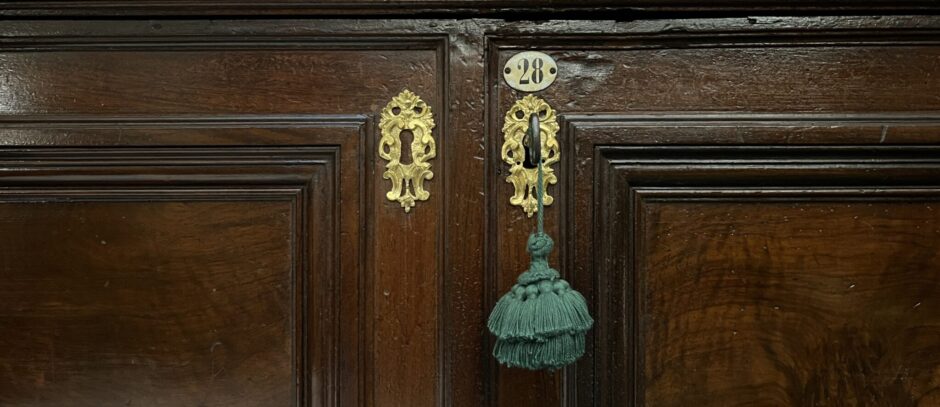From a reader:
I have a question that I haven’t been able to find an answer to. During Benediction of the Blessed Sacrament, when the priest traces the sign of the cross with the monstrance, should the members of the congregation simultaneously make the sign of the cross? Is this a matter of local custom, or is it governed by rubrics? Our university parish has Exposition and Benediction twice a week, and the congregation makes the sign of the cross, which always feels awkward to me, since the priest moves the monstrance so slowly. However, whenever I see Benediction on EWTN, no one in the congregation moves.
You are blessed to have Exposition and Benediction at your university.
You haven’t found an answer because there isn’t one.
There is no "standard" way by which people should cross themselves at Benediction.
As a matter of fact, while it is entirely natural to do so, it is not obligatory to cross yourself at all.
This is one of those moments in which you are free to do as you please, as the spirit moves you. You can do so together with the actions of the one giving Benediction, or before or after or during, or not at all.


































A side question. The rubrics do not allow blessings to be given in the presence of the Blessed Sacrament exposed. So would this also forbid blessing oneself with holy water on entering a chapel in which the Sacrament is exposed? And the blessing at the beginning of the Gospel Canticles if the Office is being celebrated in the presence of the Sacrament?
As a Catholic of almost 59 years, and having attended and served Benediction
both in America and Europe, I have to say that I have never heard of a general
practice of blessing oneself during the blessing at Benediction.
I’ve recently seen a lot of people making the sign of the cross three times, once each time the server swings the thurible.
I bless myself veery sloowly following the motion of the monstrance, and reciting slowly the sign of the cross.
The practice among the clerics and seminarians of the ICRSP (which, I assume, reflects the traditional practice in the Roman Rite) is to make a profound bow during the blessing itself. There is no sign of the cross made upon oneself. Likewise, during exposition, there are no signs of the cross, no blessing, no use of holy water, and the head is never covered if seated. If one were to pray the Office during exposition (publicly or privately), the sign of the cross would not be made in the usual places. The faithful, of course, are not bound to such proscriptions.
Also, during the chanting of the Tantum Ergo, all should make a profound bow during “veneremur cernui,” including the the priest and ministers serving at the altar.
dome view: I believe that refers to someone else blessing, e.g., the priest.
Re: “traditional practice in the Roman Rite”
The point is that, in some things, there is more than one “traditional practice”. There is frequently a lot of different stuff allowed. In general, if it’s not forbidden, we have the freedom to do individual devotional stuff as much as we want.
If you go to an Orthodox or Conservative synagogue (shul), you’ll see equally devout Jews doing different things at the same cues during the service. Why? Because that’s the way they were taught by their parents, or that’s the way people did it in their town in the old country. No permissible practice is forbidden, especially since each Jewish family may carry an irreplaceable piece of the history of Jewish liturgical practice in some town where everyone else was killed by the Nazis.
After the last forty years, it’s easy to get suspicious of people “doing their own thing” at any part of the Mass. But to get doctrinaire about these permitted things would be the true betrayal of tradition. (Sinning against the Holy Spirit, too.)
Maureen,
I should have said, “reflects the traditional practice in Rome.” Notice too that I said, “The faithful, of course, are not bound to such proscriptions.” I am very much in favor of the medieval practice of the faithful’s posture during the liturgy, i.e. they “did their own thing” without pews, without communion lines, without those things which have been imposed on the faithful over time. That being said, the faithful at benediction may do whatever they please (within reason), they may make as many signs of the cross as they want. The clergy, however, are bound to whatever choir regulations their community or rite or local tradition dictates.
We have a holy hour and mass at our university every day! :-)